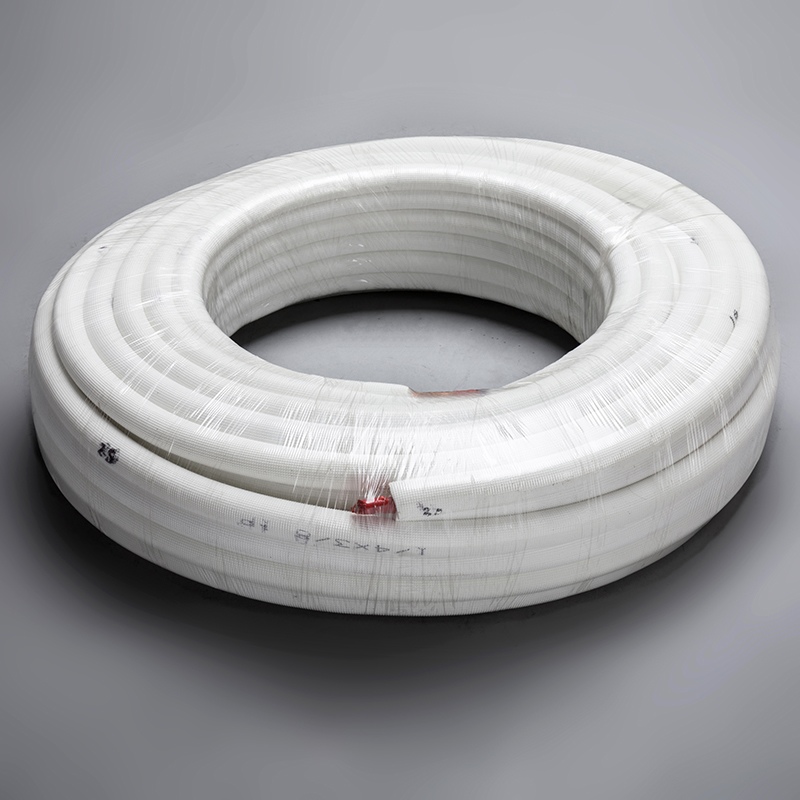How to Fix Bent Copper Tubing in Air Conditioners

Fixing bent copper tubing in your air conditioner is crucial for maintaining its efficiency. When the tubing bends, it can restrict the flow of refrigerant, leading to reduced cooling performance. You need to address this issue promptly to ensure your air conditioner operates at its best. Using a Copper Pipe for Air Conditioner requires careful handling to avoid further damage. While straightening the Copper Pipe for Air Conditioner, you must apply even pressure and use the right tools to prevent kinks or leaks. Remember, maintaining the integrity of the copper tubing is essential for the longevity of your air conditioning system.
Key Takeaways
Assess the damage to the copper tubing before attempting any repairs to determine the best course of action.
Use essential tools like a tube bender, pipe cutter, and pliers to ensure a safe and effective repair process.
Always clean the tubing and apply lubricant before straightening to reduce friction and prevent kinks.
Straighten the tubing carefully using a tube bender or gentle manual techniques to maintain its structural integrity.
Conduct thorough visual inspections and pressure tests after repairs to check for leaks and ensure optimal performance.
Regularly inspect your air conditioner's copper tubing to catch issues early and maintain system efficiency.
Avoid common mistakes by applying gentle pressure and using proper support when bending copper pipes to prevent damage.
Tools and Materials for Copper Pipe in Air Conditioner
When you need to fix a copper pipe for an air conditioner, having the right tools and materials is essential. This ensures that you can perform the task efficiently and safely. Below is a list of essential tools and necessary materials that will help you in the process.
Essential Tools
Tube Bender
A tube bender is crucial when you need to bend copper pipe using a pipe bender. This tool allows you to create smooth bends without causing any kinks or damage to the copper pipe for air conditioner. It is designed to apply even pressure, ensuring that the pipe maintains its structural integrity.
Pipe Cutter
A pipe cutter is another important tool. It helps you make clean cuts on the copper pipe for air conditioner. This tool is especially useful if you need to replace a section of the pipe. A clean cut ensures that the new section fits perfectly, reducing the risk of leaks.
Pliers
Pliers are versatile tools that you will find handy during the repair process. They help you grip and manipulate the copper pipe for air conditioner, especially when you need to make minor adjustments or remove damaged sections.
Necessary Materials
Replacement Tubing (if needed)
Sometimes, the damage to the copper pipe for air conditioner is too severe to repair. In such cases, having replacement tubing on hand is necessary. This ensures that you can quickly swap out the damaged section and restore the system's functionality.
Lubricant
Lubricant plays a vital role when you bend copper pipe using a pipe bender. It reduces friction, making it easier to bend the pipe without causing any damage. Applying lubricant also helps prevent the formation of kinks, ensuring a smooth bending process.
Cleaning Cloth
A cleaning cloth is essential for maintaining the cleanliness of the copper pipe for air conditioner. Before you begin any repairs, use the cloth to wipe down the pipe. This removes any dirt or debris that could interfere with the repair process.
By equipping yourself with these tools and materials, you can effectively address any issues with the copper pipe for air conditioner. This preparation not only makes the repair process smoother but also ensures the longevity and efficiency of your air conditioning system.
Step-by-Step Guide to Straightening Bend Copper Tubing

Assess the Damage
Before you begin straightening bend copper tubing, you need to assess the damage. This step ensures that you understand the extent of the problem and choose the right approach for repair.
Identify the Bent Area
First, locate the bent area on the copper tubing. Look for any visible signs of bending or deformation. This will help you focus your efforts on the specific section that needs attention.
Determine the Severity
Next, evaluate the severity of the bend. A slight bend might require minimal effort to fix, while a severe bend could necessitate more intensive measures. Understanding the severity helps you decide whether you can proceed with straightening or if you need to replace the tubing.
Prepare the Tubing
Proper preparation is crucial for successful straightening of bend copper tubing. It ensures that the tubing is ready for the repair process and minimizes the risk of further damage.
Clean the Tubing
Start by cleaning the tubing. Use a cleaning cloth to remove any dirt, dust, or debris from the surface. A clean surface allows for better inspection and ensures that no particles interfere with the straightening process.
Apply Lubricant
After cleaning, apply a lubricant to the bent area. The lubricant reduces friction, making it easier to manipulate the tubing. It also helps prevent kinks during the bending copper pipe process.
Straighten the Tubing
With the tubing prepared, you can now proceed to straighten it. This step involves using tools and techniques to restore the tubing to its original shape.
Use a Tube Bender
A tube bender is an effective tool for straightening bend copper tubing. Position the bender at the center of the bend and apply even pressure. This method helps you achieve a smooth and uniform bend without causing additional damage.
Manual Straightening Techniques
If you need to bend copper pipe without a pipe bender, manual techniques can be useful. Gently apply pressure with your hands to straighten the tubing. Be cautious and ensure that you do not apply too much force, as this could lead to new bends or kinks.
By following these steps, you can effectively straighten bend copper tubing and restore your air conditioner's efficiency. Proper assessment, preparation, and technique are key to a successful repair.
Check for Leaks
Ensuring that your air conditioner's copper tubing is free from leaks is crucial for maintaining its efficiency and performance. After straightening the tubing, you should conduct a thorough inspection to confirm that no leaks have developed during the repair process.
Visual Inspection
Begin with a visual inspection of the copper tubing. Look closely at the area you repaired, as well as the surrounding sections. Pay attention to any signs of moisture or discoloration, which could indicate a leak. Examine the joints and connections carefully, as these are common areas where leaks can occur. If you notice any suspicious spots, mark them for further testing.
Pressure Test
After the visual inspection, perform a pressure test to ensure the integrity of the tubing. This test involves applying pressure to the system and monitoring it for any drops that could indicate a leak. You can use a pressure gauge for this purpose. Attach the gauge to the system and slowly increase the pressure to the recommended level for your air conditioner model. Keep an eye on the gauge for any fluctuations. If the pressure remains stable, your tubing is likely leak-free. However, if you observe a drop in pressure, you may need to re-examine the tubing and address any leaks found.
By conducting both a visual inspection and a pressure test, you can confidently ensure that your air conditioner's copper tubing is in optimal condition. These steps help maintain the system's efficiency and prevent potential issues that could arise from undetected leaks.
Tips to Avoid Common Mistakes When Bending Copper Pipe
Bending copper pipes requires precision and care. Mistakes can lead to inefficiencies or even damage. Here are some valuable tips for bending copper pipe effectively.
Avoid Over-Bending
Over-bending can weaken the copper pipe, leading to potential leaks or structural failure. To prevent this, follow these guidelines:
Use Proper Tools
Always use the right tools for the job. A tube bender is essential for creating smooth bends without damaging the pipe. This tool applies even pressure, ensuring the pipe maintains its integrity. Avoid using makeshift tools, as they can cause uneven bends and increase the risk of leaks.
Apply Gentle Pressure
When bending copper pipes, apply gentle and consistent pressure. Sudden or excessive force can cause the pipe to kink or crack. Take your time and let the tool do the work. This approach minimizes stress on the pipe and reduces the likelihood of damage.
Prevent Kinks
Kinks in copper pipes can restrict flow and lead to inefficiencies. Here’s how to avoid them:
Bend Slowly
Slow and steady wins the race when bending copper pipes. Rushing the process increases the risk of kinks. Move the pipe gradually, allowing it to adjust to the new shape. This method ensures a smooth bend and maintains the pipe's functionality.
Use Support
Support the pipe during the bending process. This prevents it from collapsing under its weight. You can use a bending spring or similar support to maintain the pipe's shape. Proper support is crucial for achieving a clean and efficient bend.
By following these tips for bending copper pipe, you can ensure a successful and efficient process. Proper technique and patience are key to maintaining the integrity of your copper pipes and preventing common issues like leaks and kinks.
Understanding the Risks of Straightening Bent Copper Tubing
Straightening bent copper tubing in an air conditioner filled with refrigerant involves certain risks. You must understand these risks to make informed decisions and maintain the efficiency of your cooling system.
Potential for Leaks
When you attempt to straighten copper tubing, you risk creating leaks. These leaks can significantly impact your air conditioner's performance.
Impact on System Efficiency
Leaks in the copper tubing can lead to cooling inefficiency. The refrigerant, which is crucial for the cooling process, may escape through these leaks. As a result, your air conditioner filled with refrigerant might struggle to maintain the desired temperature. This inefficiency can cause the system to work harder, increasing energy consumption and utility bills.
Environmental Concerns
Leaks not only affect your air conditioner's efficiency but also pose environmental concerns. Refrigerants used in air conditioners can contribute to ozone depletion and global warming if released into the atmosphere. By ensuring that your air conditioner filled with refrigerant remains leak-free, you help protect the environment.
Risk of Further Damage
Straightening bent copper tubing can also lead to further damage if not done carefully.
Structural Integrity
The structural integrity of the copper tubing is at risk when you attempt to straighten it. Excessive force or improper techniques can weaken the tubing, making it more susceptible to future bends or breaks. Maintaining the structural integrity of the tubing is essential for the longevity of your air conditioner filled with refrigerant.
Cost Implications
Repairing or replacing damaged copper tubing can be costly. If you inadvertently cause further damage while straightening the tubing, you may face additional repair expenses. These costs can add up, especially if the damage affects other components of the air conditioner filled with refrigerant.
Understanding these risks helps you approach the task of straightening bent copper tubing with caution. By taking the necessary precautions, you can minimize potential issues and ensure your air conditioner filled with refrigerant operates efficiently and sustainably.
FAQs on How to Bend Copper Pipe
Can I fix bent tubing myself?
Yes, you can fix bent copper tubing yourself, but it requires careful handling and the right tools. Copper tubing is relatively soft, which makes it prone to bending. However, without proper tools, such as a tube bender, you risk collapsing the pipe or creating uneven edges. A tube bender helps maintain the structural integrity of the copper tubing by applying even pressure. If you decide to fix it yourself, ensure you have the necessary tools and follow a step-by-step guide on how to bend copper pipe effectively.
What if the tubing is severely damaged?
If the copper tubing is severely damaged, you might need to replace it instead of attempting to straighten it. Severe damage can compromise the tubing's structural integrity, leading to potential leaks or system inefficiencies. In such cases, replacing the damaged section with new tubing ensures the air conditioner operates efficiently. Always assess the severity of the damage before deciding on the best course of action. If unsure, consulting a professional can provide guidance on how to bend copper pipe or whether replacement is necessary.
How often should I check for bent tubing?
Regular maintenance is crucial for the longevity of your air conditioning system. You should check for bent tubing at least once a year or whenever you notice a decrease in cooling efficiency. Bent tubing can restrict refrigerant flow, affecting the system's performance. By routinely inspecting the tubing, you can address any issues early and prevent further damage. Understanding how to bend copper pipe properly can also help you perform minor repairs and maintain the system's efficiency.
Fixing bent copper tubing in your air conditioner involves a few key steps. First, assess the damage and prepare the tubing by cleaning and applying lubricant. Then, use a tube bender or manual techniques to straighten the tubing. Finally, check for leaks through visual inspection and pressure testing. With the right tools and careful handling, you can effectively restore your air conditioner's efficiency. Regular maintenance is crucial. By routinely inspecting and addressing issues early, you prevent future problems and ensure your system operates smoothly. Remember, proper care extends the life of your air conditioning system.
FAQ
Can I fix bent copper tubing myself?
Yes, you can fix bent copper tubing yourself. Copper tubing is relatively soft, making it easier to manipulate. However, you need the right tools, like a tube bender, to avoid collapsing the pipe or creating uneven edges. A tube bender helps maintain the structural integrity of the copper tubing by applying even pressure. If you decide to fix it yourself, ensure you have the necessary tools and follow a step-by-step guide on how to bend copper pipe effectively.
What if the tubing is severely damaged?
If the copper tubing is severely damaged, you might need to replace it instead of attempting to straighten it. Severe damage can compromise the tubing's structural integrity, leading to potential leaks or system inefficiencies. In such cases, replacing the damaged section with new tubing ensures the air conditioner operates efficiently. Always assess the severity of the damage before deciding on the best course of action. If unsure, consulting a professional can provide guidance on how to bend copper pipe or whether replacement is necessary.
How often should I check for bent tubing?
Regular maintenance is crucial for the longevity of your air conditioning system. You should check for bent tubing at least once a year or whenever you notice a decrease in cooling efficiency. Bent tubing can restrict refrigerant flow, affecting the system's performance. By routinely inspecting the tubing, you can address any issues early and prevent further damage. Understanding how to bend copper pipe properly can also help you perform minor repairs and maintain the system's efficiency.
Is it safe to use heat when bending copper tubing?
Using heat can help when bending copper tubing, but you must exercise caution. Heat makes the copper more pliable, reducing the risk of kinks. However, excessive heat can weaken the tubing or cause damage. If you choose to use heat, apply it evenly and avoid overheating any section. A small butane torch can provide the necessary heat without overwhelming the material.
What tools do I need to straighten copper tubing?
To straighten copper tubing, you need a few essential tools. A tube bender is crucial for creating smooth bends without causing kinks. A pipe cutter helps make clean cuts if you need to replace sections. Pliers assist in gripping and manipulating the tubing. Additionally, having a lubricant reduces friction during the bending process, preventing damage.
Can I straighten copper tubing by hand?
Yes, you can straighten copper tubing by hand, but you must be careful. Roll the pipe between two planks to avoid sharp kinks. This method requires patience and a gentle touch. Avoid rolling the tube too fast, as this can cause the ends to flail and create more kinks. Hand straightening works best for minor bends and requires a steady approach.
What are the risks of not fixing bent copper tubing?
Ignoring bent copper tubing can lead to several issues. Bent tubing restricts refrigerant flow, reducing cooling efficiency. This inefficiency forces the air conditioner to work harder, increasing energy consumption and utility bills. Over time, the stress on the system can cause further damage, leading to costly repairs or replacements.
How do I know if my copper tubing has leaks?
To check for leaks in copper tubing, conduct a visual inspection and a pressure test. Look for signs of moisture or discoloration around the tubing. Perform a pressure test by applying pressure to the system and monitoring for drops. A stable pressure reading indicates no leaks, while fluctuations suggest potential issues that need addressing.
See Also
The Ultimate DIY Manual for Repairing AC Copper Tubes
Exploring the Development of Copper Tubing in AC Systems
Five Ways to Reduce Expenses on Copper AC Tubes
Discovering the Role of Copper Tubing in AC Systems
Simple Methods to Professionally Install Copper Tubes for AC


